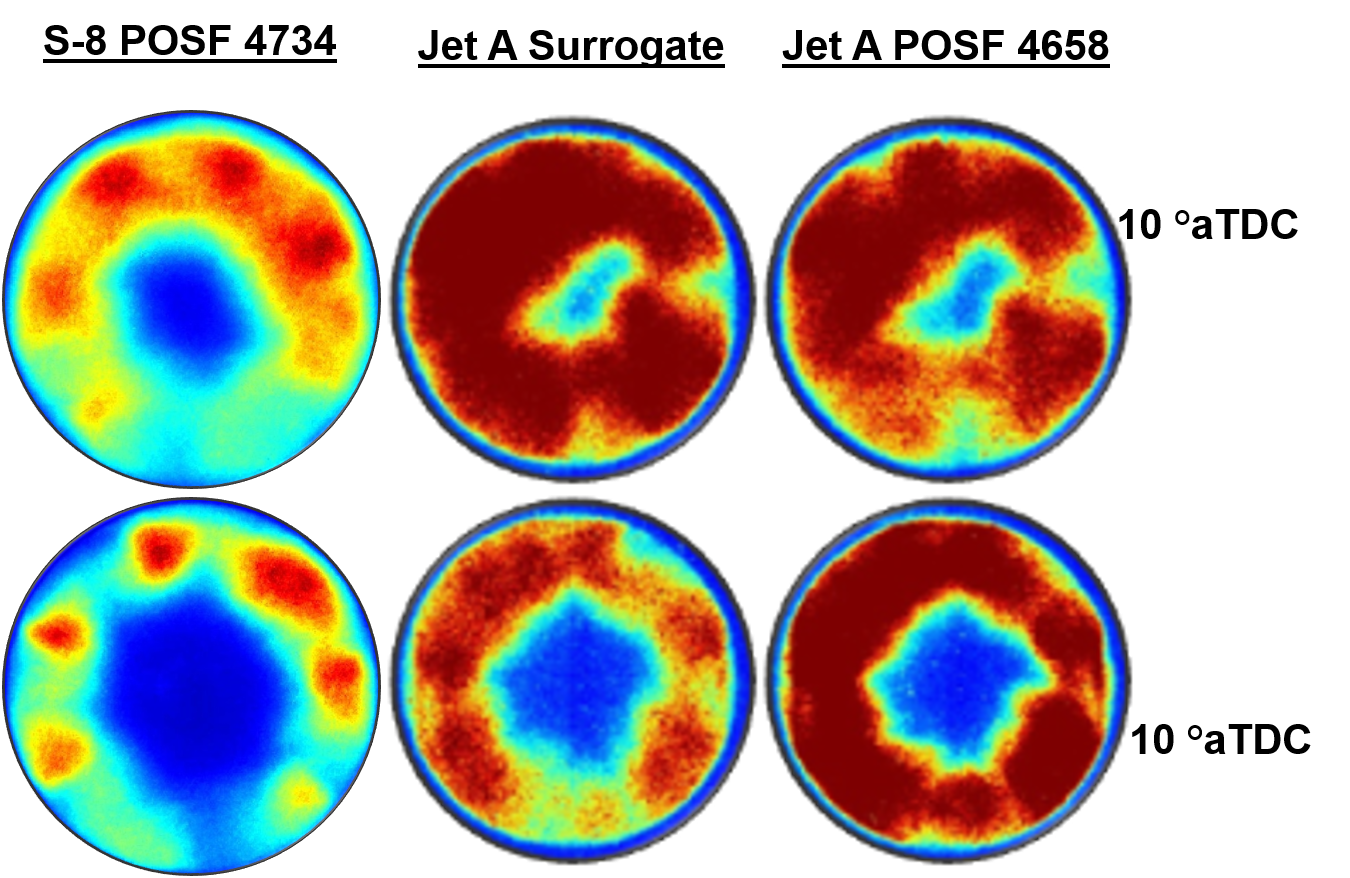Intelligent Power Systems
Annual PlanValidation of JP-8 Surrogates in an Optical Engine
Project Team
Government
Peter Schihl, U.S. Army GVSC
Industry
Taylor Hansen, Controlled Power Technologies, Inc.
Student
Xin Yu, Wayne State University
Project Summary
Project duration: 2013-2015

Accurate predictive tools are requisite for the design and improvement of practical combustion systems, including military diesel engines. Now and for the foreseeable future, simulations of distillate fuels considering detailed chemistry remain impractical due to the large number of species present, the enormous computational expense required for their consideration, and insufficient kinetic data. Surrogates, comprising mixtures of a limited number of compounds that capture essential characteristics of JP-8, together with reduced kinetic mechanisms that describe their oxidation, are therefore being developed to reduce the computational cost of numerical combustion simulations while maintaining their fidelity. However, the ability of any such surrogate-mechanism pair to represent the behavior of the real fuel must be demonstrated to establish the validity of any simulated combustion process.
This project has two overarching goals: to generate an empirically based DCN model for the six-compound surrogate palette used by the Univ. of Michigan (Prof. Violi’s group) optimizer, and to validate the optimizer through comparisons of surrogates against target jet fuels in an optical engine over a temperature and pressure range representative of conditions in military diesel engines.
The surrogates will be experimentally compared against JP-8s of various centane number (CN), to provide an assessment of their ability to reproduce JP-8 behavior in an engine environment. Emphasis will be on the use of optical diagnostics to characterize and contrast surrogate behavior in the various combustion phases, utilizing measurements of spray, temporal and spatial distribution of intermediates such as OH and HCHO, and quantitative temperature fields. We will provide feedback and insight to Violi’s group regarding the in-cylinder behavior of these surrogates. An outcome of these experiments will be to provide autoignition data on JP-8 fuels of various CN over a range of temperatures, thus contributing to the body of knowledge on low CN Sasol fuel and potential misfire zones. Also, reacting flow numerical simulations will be made with the surrogates. This will provide a means of validating not only the surrogate itself, but surrogate-mechanism pairs by allowing direct comparison of predicted combustion intermediate formation with the experimental measurements.
Publications:
- X. Luo, X. Yu, M. Jansons, “Simultaneous In-Cylinder Surface Temperature Measurements with Thermocouple, Laser-induced Phosphorescence, and Dual Wavelength Infrared Diagnostic Techniques in an Optical Engine”, SAE Congress, Paper no. 2015-01-1658, Detroit, MI, 2015.
- X. Yu, X. Luo, M. Jansons, D. Kim, J. Martz, A. Violi, “A Fuel Surrogate Validation Approach Using a JP-8 Fueled Optically Accessible Compression Ignition Engine”, SAE Congress, Paper no. 2015-01-0906, Detroit, MI, 2015.
- Luo, X., Yu, X., Zha, K., Jansons, M. et al., “In-Cylinder Wall Temperature Influence on Unburned Hydrocarbon Emissions During Transitional Period in an Optical Engine Using a Laser-Induced Phosphorescence Technique”, SAE Int. J. Engines 7(2):2014, doi:10.4271/2014-01-1373.
- Yu, X., Zha, K., Luo, X., Taraza, D., Jansons, M., “Simulation and Experimental Measurement of CO2*, OH* and HCHO* Chemiluminescence from an Optical Diesel Engine Fueled with n-Heptane”, SAE Paper 2013-24-0100.

